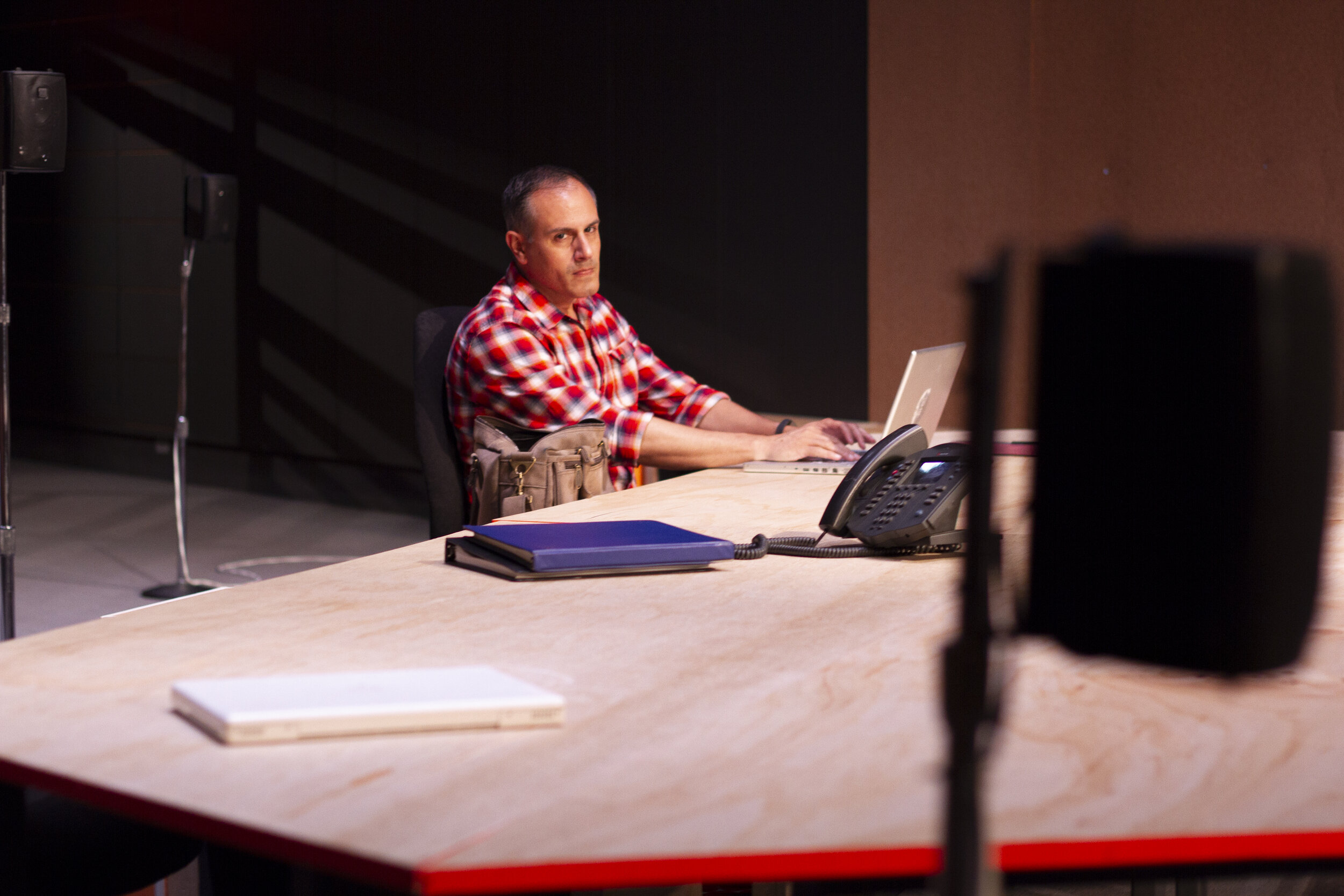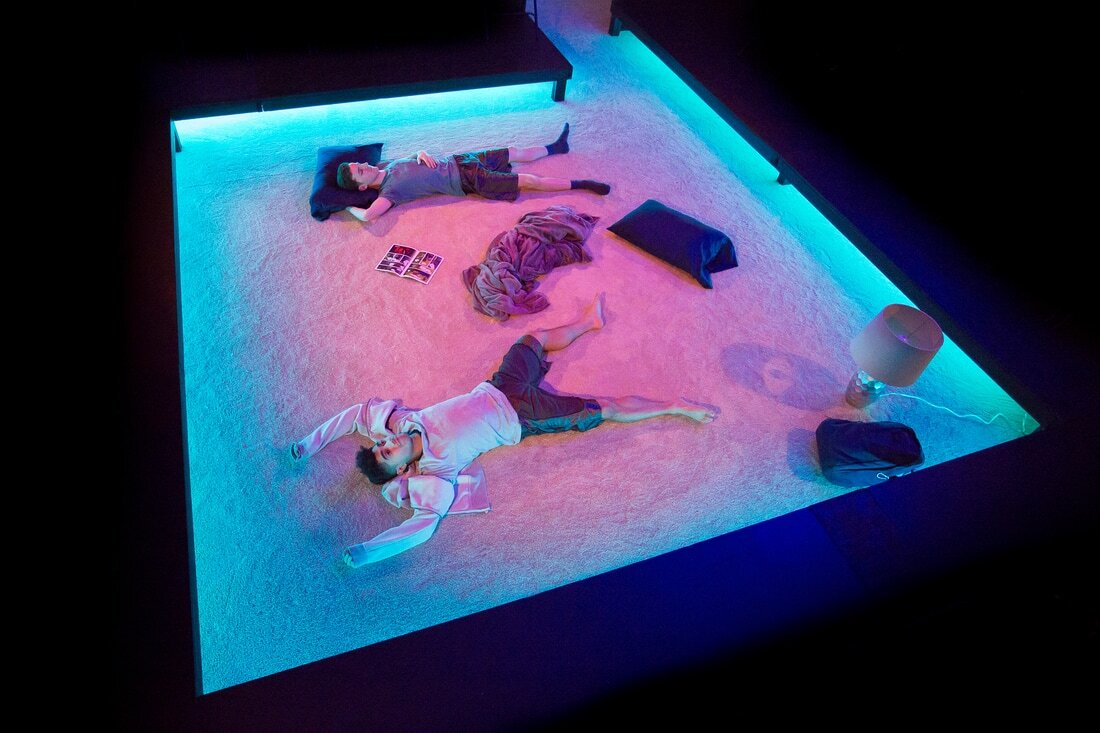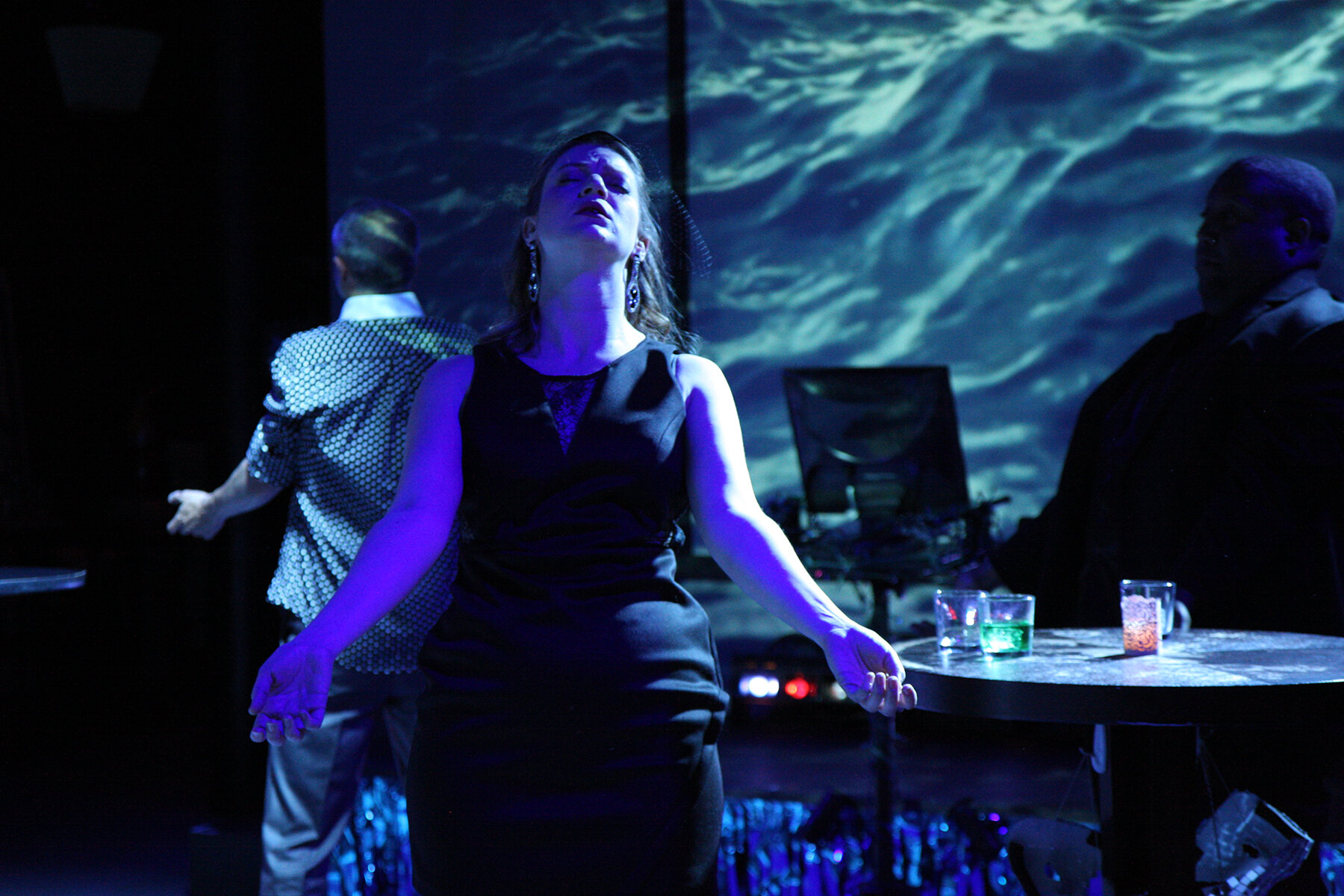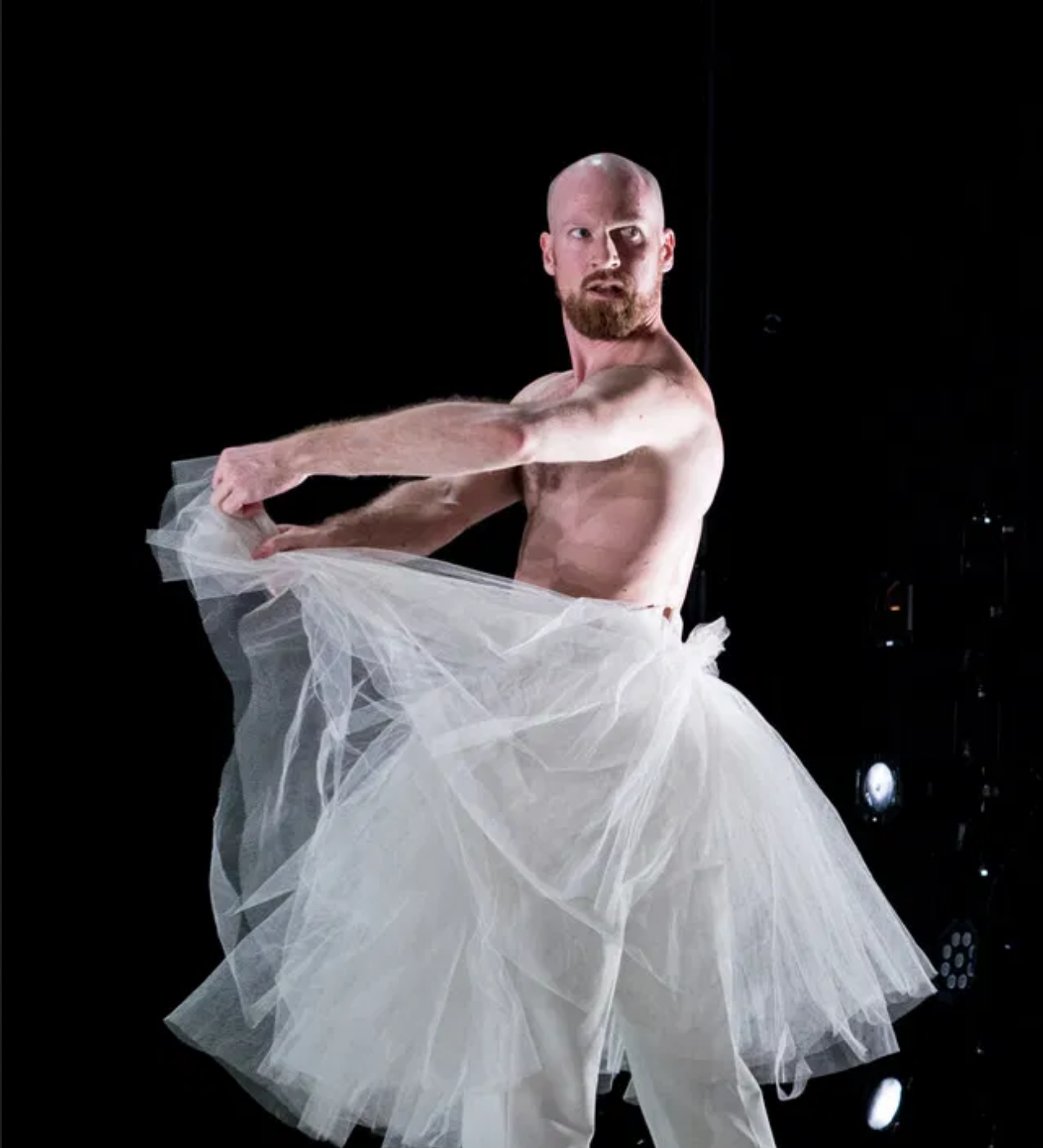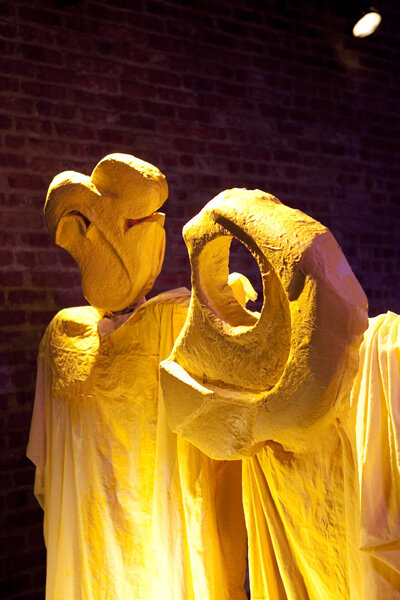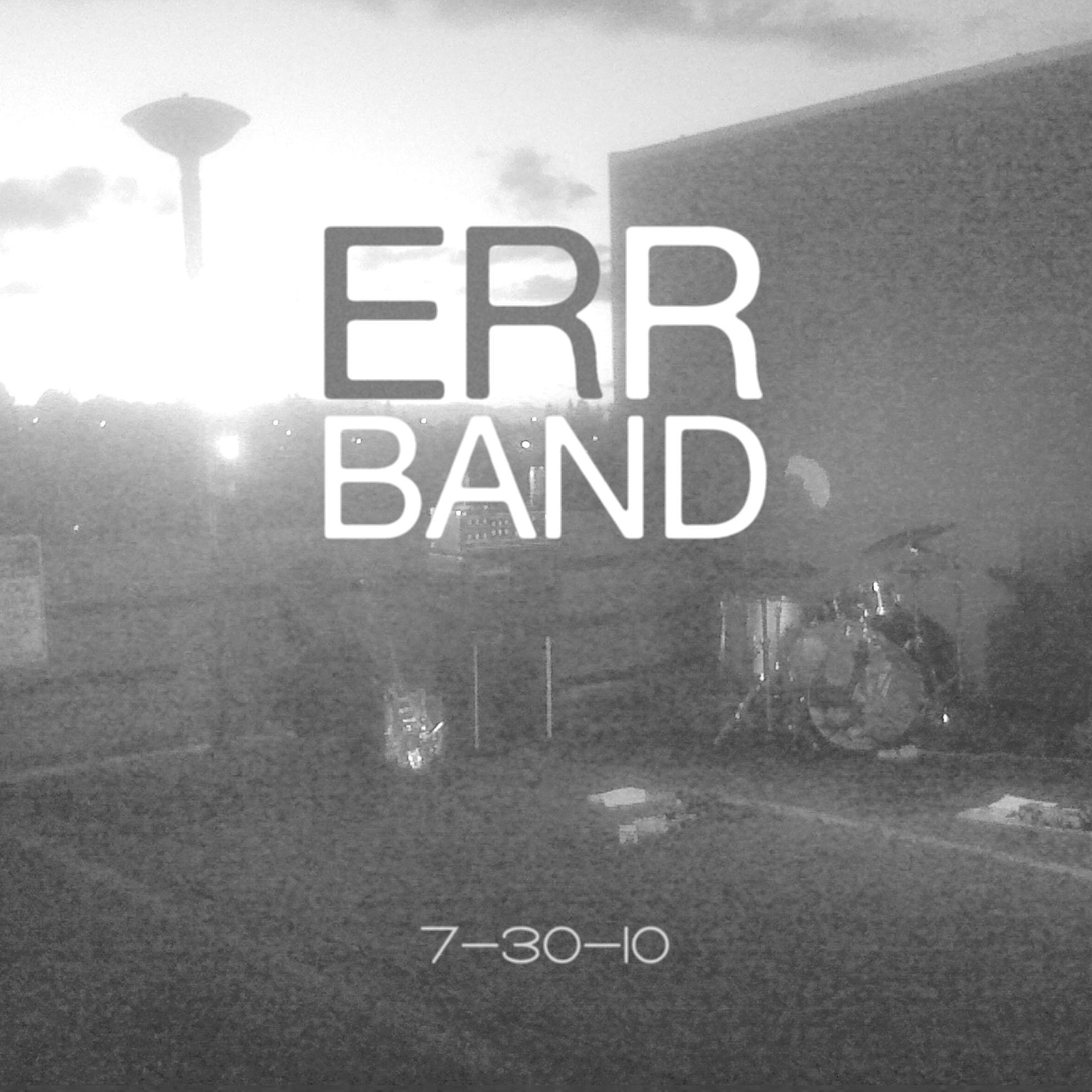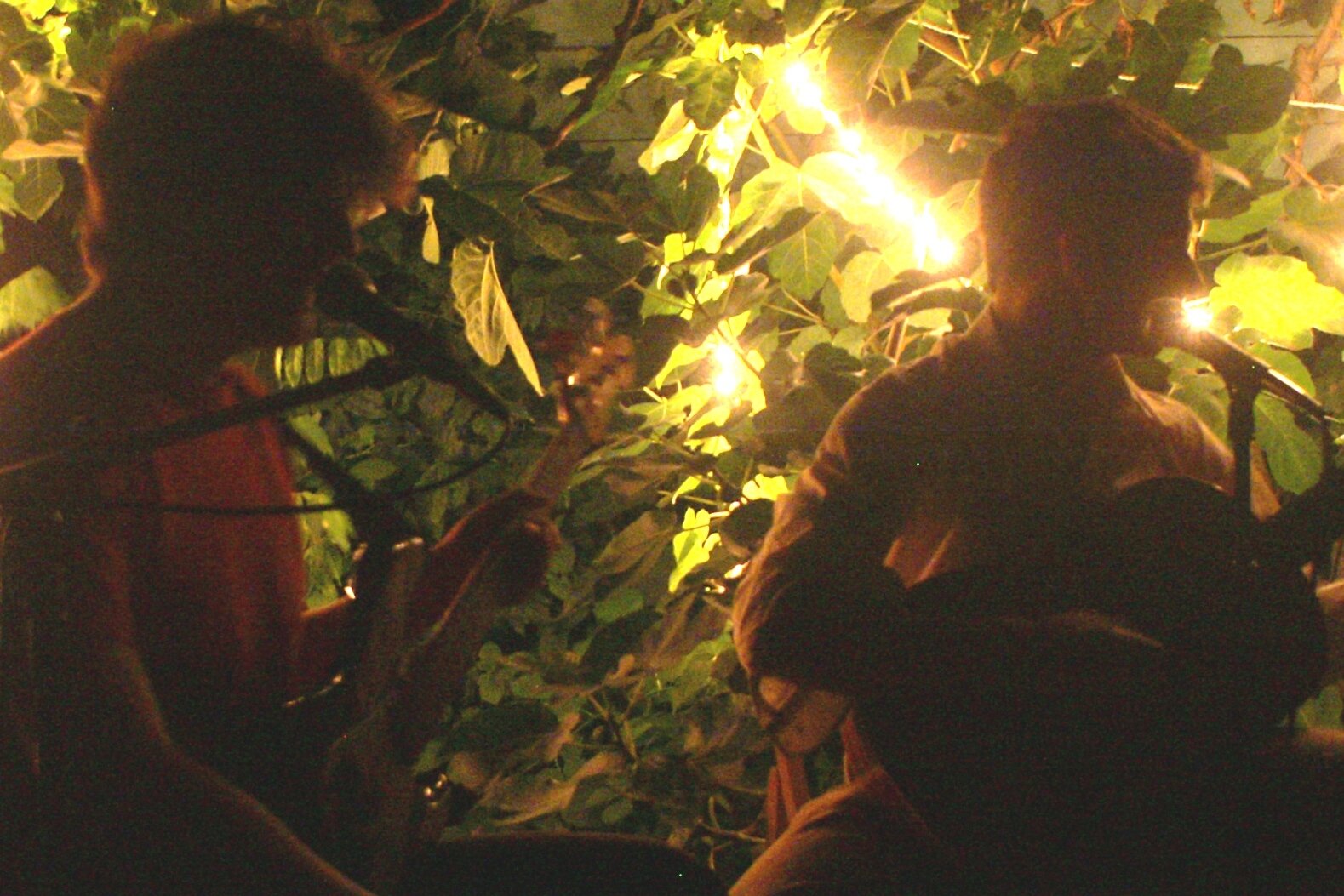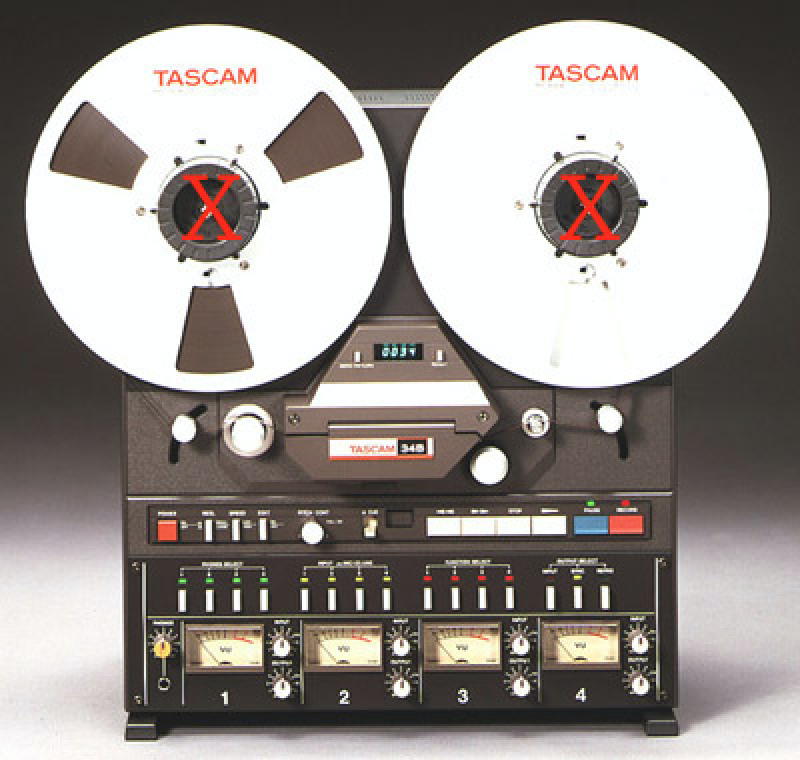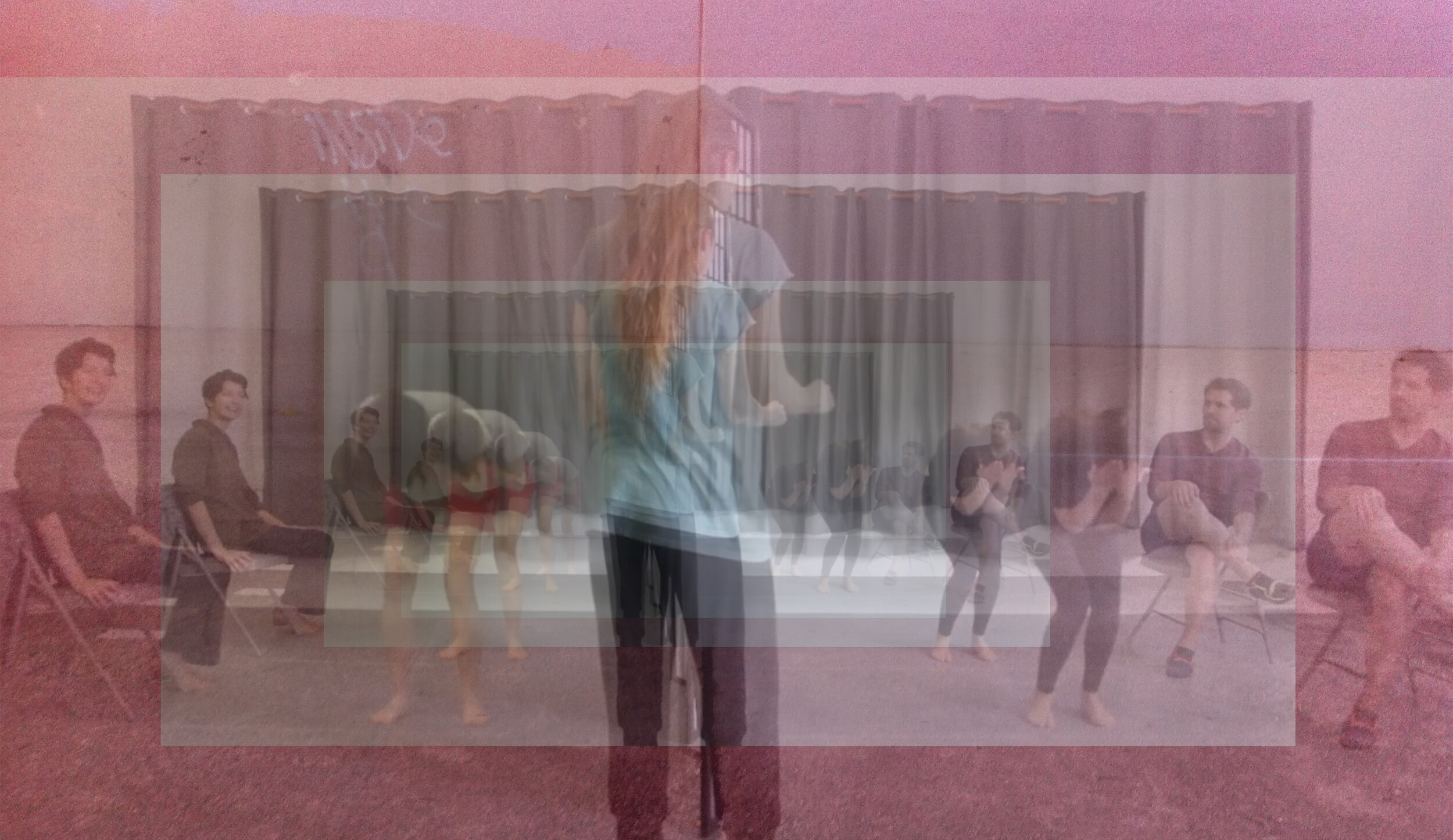selected sound design & composition
ellsworth
This is a rock and roll album by a group out of Carnegie Mellon University’s School of Drama, where I happened to be a grad student while they were undergrads. This album was recorded at CMU’s classical studio (ORTF ahoy!) and edited, mixed, and mastered in my attic in Pittsburgh, PA. The recordings arrived in my hands with 100% crispy clean guitar sounds from the studio amps, so what you hear is (a) completely fictitious and (b) the result of collaboration in post-production. These guys are great, you should buy their stuff.
intimatics I-III
Kate Dakota Kremer / Philip Gates
As described by Kate: Intimatics (i-iii) raises questions about how borders, walls, prisons, schools, and other governmental structures of containment shape the practice of intimacy between individuals and among communities—and how the practice of intimacy might reshape those structures.
Intimatics is written as a series of tasks, in which performers must hear each other, metaphorically or literally, through layers of translation and impediment. In my reading, the goal is to adjust the performers’ and audiences’ listening (actual and metaphorical) over the course of the evening, slowing us down and tuning us up. I scored the piece with a gentle re-deployment of Lucier’s i am sitting in a room: recording the sound of the room, then re-recording the room with the sound of the room playing in it, through multiple generations until the overtone quality of the room itself becomes dominant in the soundscape.
short ride out
Big Dance Theater / “Short Form”
Short Ride Out is a co-composition with Tei Blow, that toured as scoring for a short solo by the same name, danced by Aaron Mattocks in Big Dance’s evening program Short Form. SRO was an adaptation of a piece choreographer Annie-B Parson had created for ballet star Wendy Whalen, re-imagined for a queer male body. Annie-B was interested in a piece of music that somehow captured a certain kind of masculinity, something big and wide open, brawny and simple, aggressive but also self-aware. After listening to a lot of Glenn Branca, we set on Rhys Chatham’s Guitar Trio as a guide: Chatham’s piece consists of a single chord strummed at different frets, resulting a Lucier-like wash of overtones within the wider no-wave rock sound. Tei and I tuned his drums to a series of fifth intervals, restrung a couple of guitars to a single note, and then fixed our millions of mistakes in Ableton. Tei on drums, me on guitar, mixed by both of us, mastered by Tei.
seen by everyonE
5 on a match / Kristin marting
This show was written entirely from verbatim Facebook posts, and focused on the bizarre qualities of togetherness and isolation that take place on the online platform— specifically the memorial page (and the “ghost page” that preceded it), the forensically searchable leavings of someone in the days before they take their own life, and the waves of authentic, performative, and histrionic grief that follow. In text form. The show follows a group of people arriving for a wake in a fictional/disembodied bar Of The Mind, mourning and celebrating, in a heightened, stilted way. The sound design comprised a jukebox, live microphone and effects for the Facebook moderator bot character, a karaoke system, and aggressive scoring. The sound design for this show was meant to be a troll, both to the show and the audience, with a secret softness and vulnerability. Everything is sampled, everything is stolen. Some samples here from the geniuses Tei Blow and Nick Zammuto.
ghost in the machine
Dead Copycats / Nathaniel Basch-Gould
This was a play about a guy who was with a girl but the girl died and now he’s taking lots and lots of Ambien and spending all of his time listening to old voicemails and hanging out with the hallucination of the girl. Eventually the guy takes too much Ambien and ends up killing himself, with the tacit approval of his brother, who acknowledges that his life is basically over anyway. And, you know, mom will be sad.
This whole thing is known as the Woman In The Fridge Trope, which roughly describes stories in which the death/rape/other destruction of a female character with no other recognizably human qualities (no feelings, opinions, history separate from a heterosexual relationship) is deployed as an inciting event for a male character’s storyline. This is that. However, I also thought the sound design came out pretty well.
returning to albert joseph
Satori Group / Caitlin sullivan
In a speculative world of the near future, major urban areas are super-futuristic and surveilled, and everywhere else is… “deactivated.” People who stayed out yonder are viewed as terrorists, subject to arrest or assassination. A city boy who grew up with a resistance leader follows his nose to a meeting in the deactivated zones, and unwittingly leads the police state right to their door. In the aftermath, he and the only other survivor must determine how to proceed, how to forgive, the meaning of hope.
The major design issues: a lighting-synchronized time-lapse scene at the beginning outlining the deactivation, a series of flashbacks as the boy comes out of a post-traumatic haze, and atmospheres for a world twenty years after the end of industrial life. tw: gunfire
gloria (by brandon jacobs-jenkins)
Hatch Arts Collective / adil mansoor
The Pittsburgh premiere of BJJ’s breakout play! Adil and the other geniuses at Hatch read Gloria as a story about how structures themselves—both conceptual and physical— pass along violence between people: changing the race of the person at the top of a workplace may or may not solve that workplace’s racism if it’s baked into the walls.
Hatch always works site-specifically; Gloria was set in a mall-turned tech office park on the underserved North Side of Pittsburgh. Jumping off from a knowledge that sound would need to ‘do’ the office shooting that takes place midway through the play, Adil and I decided to build the sound physically into the room itself: we placed contact transducers on the walls and attached “butt-kicker” subwoofers to the HVAC ducting. We placed three standing speakers in the space, each associated with a gunshot, all of which would remain throughout the play: before the violence, and long after it, even in a “different” office.
In addition, there is a recently-dead pop star called Sarah Tweed in the play that everybody is listening to. I based our Sarah Tweed off of early Liz Phair tapes. Vocals by Gray.
A Midsummer Night’s Dream
nyu meisner studio / Pat diamond
This version of a Midsummer Night’s Dream was a fantasia of drag, silver rain curtains, and gleeful anachronism between the Arbitrary Shakespearian Past and the modern day. The cast sang and danced to original songs setting fairy poetry. Oberon accompanied Puck’s spells and incantations on piano and guitar. We had a live-mic caller for a line dance for the Bergomask, set to a mashup of songs about love circa 1970 and 2010 (source by our student cast). Puck haphazardly operated an FM radio with an analog dial tuner, seeking through static for the classical station. It was seated in the alley.
It was super nuts, total mayhem, and a lot of fun.
on the table (the err band)
Sojourn Theater
"On The Table" was a beautifully weird performance piece put on by the Sojourn Theatre company in 2010. Act I took place simultaneously in the cities of Portland and Molalla, Oregon, Act II took place on a pair of school buses speeding toward each other, and Act III took place at the meeting point, with audiences from both cities meeting and sharing a meal as the city boy & country gal celebrated their imaginary wedding and talked about what it all means. For twelve nights in July, we were the soundtrack to that evening, and one night we happened to set up a microphone. This is that recording.
Of note:
- This recording is part of Dave Lowensohn’s CASSINGULARITY project (cassingularity.com)
- We occasionally make mistakes.
- Toward the end, things get so loud that we overload the microphone, which will either sound awesome or obnoxious, depending on how you were raised.
Co-designed and guitar-played by me and Dave Lowensohn.
Isaac Hoffer on bass guitar, and Andy Prahl on drums.
Huge thanks to Michael Rohd and Sojourn Theatre for making this happen & letting us share it with you.
omega kids
Noah Mease / jay stull
Omega Kids is an intimate little play that takes place in a floating black box surrounding a little apartment. Michael and Michael met teaching at camp. Michael is staying with Michael before he heads home to his parents’ house. Michael is bi and knows it. Michael doesn’t know what he is but everyone assumes he’s gay, and that’s probably right, but mostly Michael is just one of the few people he really feels comfortable around. They talk about comic books, or rather just one comic book, where the teenage heroes lose their mentor and have to go on alone… all. night. long. It’s a play about something almost happening: they almost kiss, or maybe that the world is almost something completely different from what we thought, that powers are real, that nights last forever, that you can stretch time and stay in it, safe.
I scored the show with a few assists from always-collaborator tei blow. I tried to make a world of music and nature and city that is gently, finely, tuned to the boys’ feelings through the show, and to the holding-together-ness of the fragile reality they create.
the yellow sound (Wassily Kandinsky)
Target Margin lab / kate foster
In 1909, Wassily Kandinsky, painter, expressionist, primitivist, pioneer of abstraction itself, created a theater piece inspired by synaesthetic connections between color and sound. It involved a full orchestra, chorus, and corps de ballet, plus giant puppets, a talking flower, an actual child, and a stage footprint something like the Bolshoi would play in Moscow.
We did the piece at The Brick, Williamsburg’s venerable 50-seat black box off the Lorimer L stop, for Target Margin Theater’s 20th Anniversary Lab series. We basically just tried to follow the script as faithfully as we possibly could. It was utterly bonkers.
The Yellow Sound remains to this day one of the weirdest things I have ever done. My sound design is rapaciously illegal, sampling from Alfred Shnittke’s 1984 setting of the piece, from Roomful Of Teeth’s color-sound-poem AIEOU, and like a million other things, mixed in with my own compositions and hellacious slapstick noise-making. Enjoy!
independent music
I’m currently working on an album under the name Please Send Help. I’m also taking the opportunity of quarantine to re-master some of the last decade-plus of music I have laying around that were sold at theater shows, released on single-run CD in handpainted paper cases at music shows, not sold / not released, etc.
